Please note: As an Amazon Associate I earn from qualifying purchases. I also work with other affiliate partners and may be compensated from the links below. Details here.
Nikon D5300 in 2025: Great Budget DSLR for Beginners to Invest In (Review)
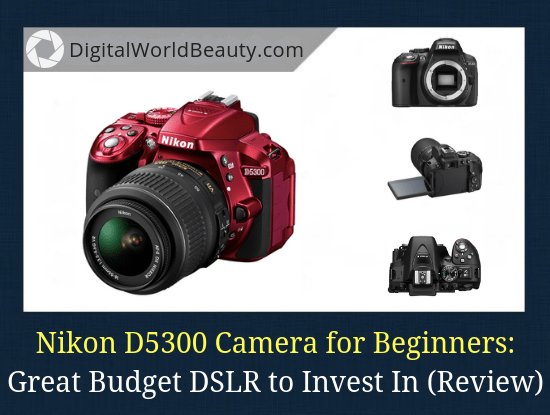
Welcome to my Nikon D5300 review! (2025 Update)
I often hear people ask:
- Is Nikon D5300 a good camera?
- Is Nikon D5300 still worth buying in 2025?
My honest opinion?
YES.
If you decided to get into photography and want to buy your first budget DSLR, then the Nikon D5300 camera might be one of the best investments you’ll make.”
However, it’s NOT for you if video shooting is your primary goal.
This Nikon D5300 DSLR camera excels in still photography but has limitations for serious videography work.
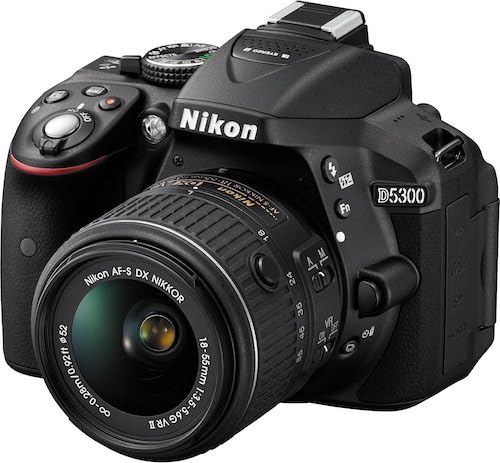 Reasons you’ll love this entry-level camera:
Reasons you’ll love this entry-level camera:
- costs less than $300 (body only)
- great budget camera for hobbyists
- has WiFi and GPS features built-in
- comes with a fully articulating LCD screen
(Just to name a few.)
The truth is…
In terms of functionality, Nikon D5300 is just one step behind the D7100, only smaller and weighs less.
Plus, Nikon D5300 image quality truly shines. This DSLR won’t disappoint whether you’re shooting in good light or challenging conditions.
I mean, check out the glowing reviews on Amazon!
Nikon D5300 Review (Summary)
| Feature | Details |
|---|---|
| Type | Compact SLR |
| Weight | 480 g |
| Resolution | 24 MP |
| Sensor Size | APS-C (23.5 x 15.6 mm) |
| ISO | Auto, 100 – 12800 (25600 with boost) |
| LCD Screen | Fully Articulated |
| Touchscreen | None |
| Weather Sealed | No |
Reasons to Buy
- very low price tag
- rotating rear display
- good image resolution
- control it from your smartphone
- little noise at high ISO for an entry-level camera
- marking and automatically transfer photos to your smartphone
- convenient viewing of horizontal photos compared to an older model
Reasons to Avoid
- no touchscreen
- not weather-sealed
- might not be the best option for video shooters
Current Pricing
As of 2025, the Nikon D5300 is available for under $300 (body only) and under $700 (with a kit lens).
Thus, the Nikon D5300 price 2025 makes it incredibly attractive, with the camera available for a budget-friendly price with kit lens, making it an affordable option for those entering the world of DSLR photography.
D5200 vs D5300 Display – What Changed?
So…
What has changed in comparison with the D5200?
- no more anti-aliasing filter, just like in D800E and D7100
- built-in WiFi and GPS
- the updated 18-55 VR II kit lens
- video recording in 1080 60p/30p
- timer control button moved to another location
- the screen became larger, can now view horizontal photos in full (see below)
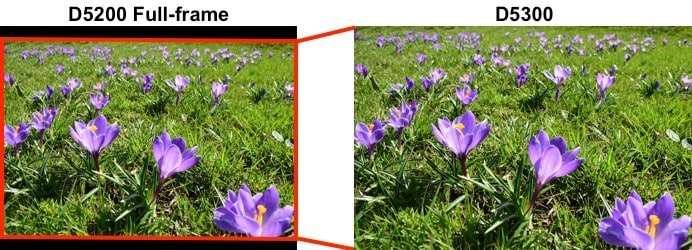
The screen on D5300 is slightly larger, 3,2″ (720 x 480 resolution) compared to D5200’s 3″ screen.
To an average person, this difference isn’t noticeable, however, this is what allowed for the 3:2 aspect ratio to happen. Simply speaking, this allows you to “stretch” the image on the whole screen.
(What’s not clear to me is why this couldn’t be done earlier.)
In this sense, viewing horizontal photographs has become much more convenient. (As seen in the comparison image earlier).
And of course, just like its predecessors (D5000/D5100/D5200), the Nikon D5300 also has a tilting screen.
This will help you shoot videos and macro photography conveniently (without bending yourself in funny positions).
Wi-Fi Connection & How It Helps (Example)
You can sync it with your smartphone via WiFi without any problems.
To do this, you just need to install the program Wireless Mobile Utility on your Android or iOS device (and is free and very easy to use).
This way:
1) You can view photos that are on the camera and download the photos you want to a smartphone or tablet.
2) Now it’s convenient to take pictures with long exposure when it is in Bulb mode, there is no need to buy additional devices like remote control or Triggertrap (which is out of business now, by the way).
Note on how to do that:
Put it in Manual (M) mode and roll the wheel until it shows “Bulb” on the display. Press and hold the shutter button for the desired length of time.
Someone once told me how he used the remote control function using Wi-Fi.
Basically, he was on a beach vacation somewhere in the US, where crowds of crabs would crawl ashore, but upon seeing people they would hide back in the water.
So…
He installed the gear on a tripod, waited for the crabs to get out of the water, and remotely photographed a lot of interesting frames of these sea creatures.
(By the way, Mark Hemmings is an excellent instructor to help you improve all aspects of your photography.)
Know Your Location with GPS
Another pretty useful feature in D5300 is the GPS module.
With it, you can tie your images to a specific place. The location data will be spelled out in exif and you can easily determine where exactly you took a particular photo.
Most people I know do care about having this feature.
Location especially matters if you’re into landscape photography, and Nikon D5300 photography benefits greatly from the GPS feature for cataloging your shooting locations.
Learning photography has never been easier…
DCM is my #1 recommendation for beginners to help you become a better photographer. Read my review here.
About D5300 Sensor and ISO
Looking at the Nikon D5300 specs, it has a 24 MP sensor, so the number of megapixels doesn’t differ from the one on the D5200.
Due to the new Nikon sensor, the D5300 can use the ISO range from 100 to 12,800 units and extend it to the Hi1 value (equivalent to 25,600).
Compare it with its predecessor, Nikon D5200, which uses ISO from 100 to 6400 units and extends it to the value of Hi2 (equivalent to 25.600).
By the way, Nikon D5300 DSLR became the first Nikon DX sensor that can use real ISO 12.800 (and not the advanced ‘Hi’ modes).
Note on Nikon D7100 vs D5300:
Judging by this indicator, the D5300 (and D3300) might outperform the Nikon D7100. Also, the Nikon D7100 uses the same sensor as the D5300 model, but because of the older processor, it can’t use ISO 12,800.
However, it is true that the D7100 focuses faster, has superior flash capabilities, and performs better in low-light conditions.
Funny, but all three models D5100, D5200, D5300 use the maximum ISO threshold of 25,600 and still can’t get any higher.
Generally speaking, when it comes to ISO there is a significant improvement in the sense that the noise has become smaller at greater ISO.
Now you can safely use ISO 6400 and not be afraid of possible losses of quality. During my Nikon D5300 test, I found that even photos at maximum ISO of 12,800 and Hi-1 (ISO 25,600) look quite decent.
One more thing to mention, the sensor on the D5300 is without an anti-aliasing filter, like on the D800E and D7100, so the image is extremely sharp.
If the image is not sharp, then you are doing something wrong.
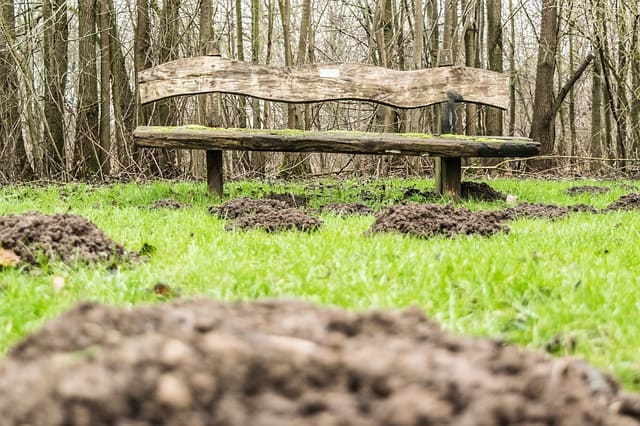
Nikon D5300 Lens Compatibility
Now, what about lens compatibility and the Nikon D5300 kit lens?
Well, nothing has changed here.
It is compatible with all Nikon lenses released in the 60s.
However, the autofocus will only work with the new AF-S and old AF-I contact lenses (with the motor).
The good news is that the majority of the lenses are with an integrated autofocus motor and the old AF lenses are almost completely replaced by the new AF-S ones, so I doubt you will have any problems.
Now…
A word on kit lenses.
The kit version is what I recommend buying if it’s your first DSLR.
In the beginning, you don’t need a lot of lenses, and a standard kit lens covers 150% of the need for your creativity.
When you have more experience in photography and will know what you like photographing the most, then you can buy the lens that will best suit your needs.
The D5300 comes in two versions, with an updated 18-55 VR lens and a new 18-140 VR kit lens.
The difference in price will be about $200, which might be quite significant for some, so if it is I’d recommend going with the Nikon D5300 18-55mm kit lens.
Other Features Worth Mentioning
1) Burst Rate
The rate of burst is no different from the D5200, however having 5 frames per second is a very good indicator, especially for a budget camera (and it is only slightly different from semi-professional models like D7100/D610).
This shooting speed is more than enough for photographing children, landscapes and even wedding photography.
2) Auto Distortion Control
Works amazingly well.
This function is enabled by default, but if you accidentally turned it off, here is how to turn it on:
- Menu> Shooting Menu> Auto distortion control> On.
It helps a little to correct the distortion of your lens, especially true for wide-angle lenses that you’ll likely use to capture the beauty of an immense landscape.
3) Auto ADR (Active D-Lighting)
I’d have this feature always turned on. It works when you shoot in JPEG.
Basically, in this mode, the DSLR tries not to light out the bright areas, and at the same time not lose the dark ones.
This happens by processing the frame at the conversion stage from RAW to JPEG right within the camera, but of course in difficult situations only the HDR mode will save.
4) HDR Mode – And How Does It Differ from ADR?
The difference is that the ADR turns a RAW frame into JPEG, trying to keep the details in both shadows and light areas.
HDR mode does roughly the same, but uses both frames with different exposures. Once you press the button, the camera in HDR mode makes two frames and then glues both together.
Naturally, this requires that the DSLR doesn’t move, otherwise you will smudge the frame.
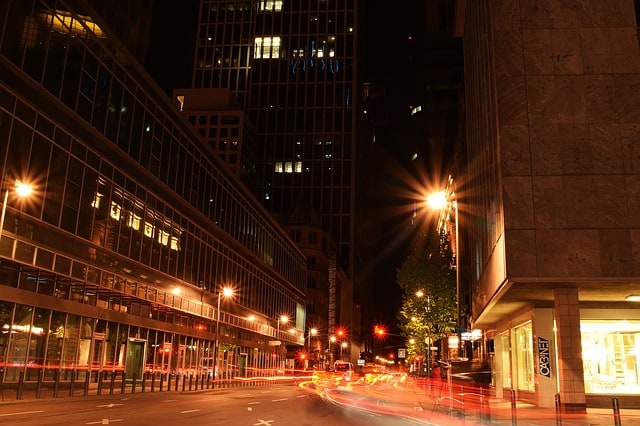
5) Interval Mode
Interval time shooting is the ideal thing for photographing lightning and fireworks.
You set the number of frames and the interval between them, press the start, and rest back. Everything else it does by itself.
6) Video Shooting
D5300 has a great articulated screen and a stereo microphone, so technically it should work fine for video shooting. However, if a video is your primary goal and you want to do it professionally, then I would suggest finding another (better) option.
When D5300 came out, its video capabilities were probably great but in 2025, there’s a very high standard. And that’s why I don’t recommend it for video content creators.
7) Flash
It has an excellent built-in TTL flash, but it still doesn’t know how to control external flashes, as does the D7100/D610.
D5300 also lacks the ability to FP-sync, so you have to take pictures with a minimum shutter speed (with the flash turned on) in 1/200 seconds.
If you plan to often shoot in the street with a flash, you should think about the ND filter. And if you want to control external flashes you need to read about the ways to control your flash.
8) Memory Card
It is necessary to purchase a regular SD memory card separately.
SD card is much more convenient than the CF because a slot for an SD card is available on almost every laptop and many tablets.
This is especially relevant if you forgot your USB cord at home.
Personally, I hate having too many cords, so I find this option super useful.
9) Battery Life
The battery is larger, 1230 mAh versus 1030 mAh on the D5200, and it’s not surprising, because now with the included WiFi and GPS, the camera wouldn’t “live” as long.
The Nikon D5300 battery life performs well in practice, while Wi-Fi does consume power, if you don’t use wireless features extensively, you can easily shoot more than 1000 frames on a single charge.
How to Set Up Nikon D5300 DSLR?
If you want to know how to set up your D5300, try using the following settings:
Shooting Menu
- Auto Distortion Control ON
- Active D-Lighting Auto
- ISO sensitivity settings, Auto ISO ON, minimum shutter speed – Auto
- Release mode Continuous H
Custom Setting Menu
- a1 AF-C priority selection Release
- a2 number of focus points AF39
- a3 build-in AF-assist illumination OFF
- d1 Beep OFF
- d3 ISO display ON
- d4 File number sequence ON
- f1 Assign Fn button HDR
Setup Menu
- Auto info display OFF
Ready to crush it as a photographer this year?
Get this practical photography course to take you from zero to photography hero. Join the course now.
Best Lenses for Nikon D5300 (2025)
If this is your first DSLR, then it’s best to buy it with an 18-55VR kit lens.
It is also recommended you pay attention to the following lenses:
- Tokina 12-28mm f/4
- Tokina 11-16mm f/2.8 (with motor!) or
- Nikon 10-24mm f/3.5-4.5
In case you do not have enough versatility, it’s worth buying 18-200VR, which is also the best lens for travel.
For those who like to shoot with a telephoto lens, go with 55-200VR or 55-300VR.
Passionate fans of macro photography need to take the 105 mm VR micro lens, or more budget 40mm micro lens option.
Finally…
If you’re into portraits, I suggest you find the Nikon D5300 with 18-140mm kit lens.
Why?
Because this longer kit lens is gonna be really useful as you’re shooting different types of portraits and light wedding stuff.
I also highly suggest you pick up Nikon 50mm F/1.8 G.
- it autofocuses,
- it is very sharp, and,
- it really gives you that background blur that portrait photographers love.
Attention:
Note that the D model won’t autofocus with that body, so be careful to get the G model!!!
Nikon D5300 vs D3500 for Beginners
If you’ve been doing a lot of research on which entry-level DSLR to get, you likely came across the D3500 that was recently released.
I don’t have the review out yet but I can say a few words here.
My opinion is that if you’re doubting between these 2 options, I suggest you choose D5300.
I don’t know what’s happening with this brand, but Nikon’s D3x00 series just gets worse and worse. Basically, D3500 is a downgrade from D3400 and D3400 is a downgrade from D3300 (in terms of features).
How’s that so?
Well, Nikon D3300 had:
- sensor cleaning,
- remote shutter port (intervalometer), and,
- microphone port.
These features were removed from Nikon D3400 and were replaced with Bluetooth. Then, while D3500 is smaller, we see fewer buttons there, and arguably less usable.
This being said…
Nikon D5300 would be the obvious better choice. Alternatively, you can invest in other newer models, like D5500 or D5600.
Nikon D5300 vs. D7100 as Your First Camera
There are so many entry-level cameras in the market right now. So, it’s not surprising many people keep wondering if the older models are still significant today.
The thing is, some products remain a favorite among beginners since they have a quality that has been proven and tested. Some examples are the Nikon D5300 and the D7100.
Released just one year apart, with the D7100 being announced to the public earlier, what could probably be the major differences between these two? Let’s check it out below!
- Number of focus points
The focus points in D7100 outnumber that of the newer unit – 51 vs 39. This is important because the more focus points there are, the more options you have when choosing which part of the screen you want to focus on.
- Shooting speed
D7100 is slightly better in terms of speed. It can perform at 6fps while the other model can only do 5fps.
- Connectivity
Though this feature often goes unnoticed, it’s as important as the others, too. D5300 has built-in WiFi and GPS, a feature only modern devices have.
There are so many more differences (or similarities) between the two models. Regardless of the unit you choose, it’s still your artistry that will matter the most. So just relax and choose which you think is best for your photography needs.
Is Nikon D5300 Worth Buying in 2025?
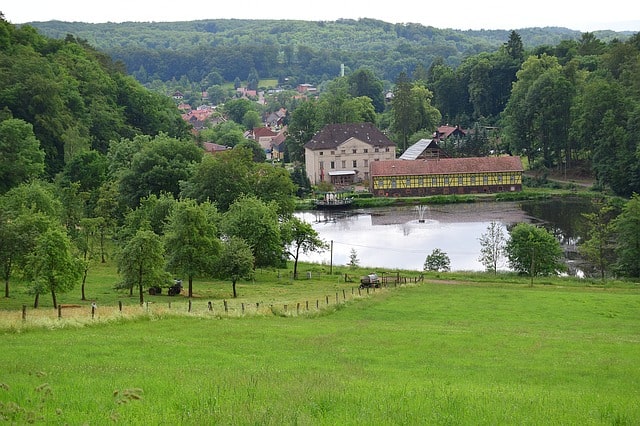
The Nikon D5300 is definitely the best budget DSLR you’ll ever hold in your hands.
- it’s light,
- it’s compact, and,
- it has an amazing image quality even in poor lighting at high ISO.
Now:
D7100 is worth buying if you are photographing for money, such as weddings or reportage photos, where speed, good flash capabilities, and convenience of switching the settings are important.
In the D5300, everything will need to be set up using the menu on the screen, but if it does, it will not take long.
The camera is equipped with a built-in Wi-Fi module that will allow it to sync with your smartphone in a matter of seconds.
It’s convenient, and in my experience doesn’t affect the quality of the images.
I don’t think the owners of earlier versions, like D5100/D5200, should upgrade to D5300 because you already have everything you need for quality photography.
And if you suddenly decide to go from D3100/D3200/D3300 to D5300 then this should be done only if you REALLY want the tilting screen.
And even then, I’d recommend going with D7100 instead. Watch my video below:
So…
Considering the Nikon D5300 release date in 2013, should you buy Nikon D5300 in 2025?
As you may have guessed already based on this review, yes, Nikon D5300 totally is worth buying even this year.
I’ll repeat myself here but this one still remains to be one of the best starter cameras today.
Arguably, it might be the best DSLR camera for beginners.
Especially if you are a beginner on a budget, looking for your first DSLR!
Now, I’d like to hear from YOU:
- What are your thoughts on this Nikon D5300 review?
- In your opinion, is Nikon D5300 still good as a first DSLR in 2025?
- Would you like me to discuss Nikon d7100 vs d5300 in depth here?
Anything else to add?
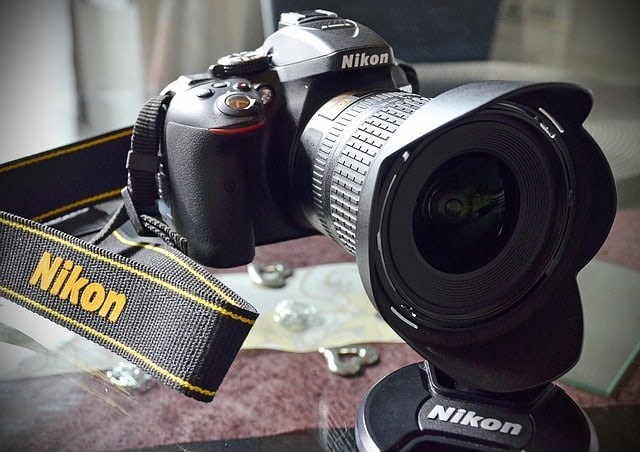



I’ve been looking for a camera for blogging when I came across your website. I love the features on this camera, and I particularly love the wifi enabled option, but this one seems to be a little complicated and I don’t love that using the wifi eats up the battery.
Is it still something you would recommend for beginner photographers or is there a better option?
Hi Sunny,
Frankly, all DSLRs will seem intimidating and complicated to newbies in photography but it isn’t as scary as it may seem.
WiFi may eat up your battery faster if you use it too long (like transferring photos to your smartphone all day long or something). Or if you constantly use flash. In my opinion, it isn’t the worst thing in a camera but of course, that’s a personal thing.
For a budget camera like Nikon D5300, it really offers a lot of great features. You may also have a look at Nikon D3300, it offers “Guide” mode that is super useful for beginners.
I also hear people asking if it’s better to get D5300 vs D7100 (or D7000). My response would be going with the former if you’re a beginner, as it’s easier to handle and understand.
Edit/2019 update:
Check this article on great cameras for social media and blog photos. More options to choose from besides the D5300 for your purposes.
I work as a journalist and periodically I go on vacation, and I would like to choose a camera for each of these “conditions”.
Nikon definitely was my favorite, but I’ve heard that D5300 doesn’t shoot video very well.
In my case, this is only the level of YouTube videos (à-la upload and forget), so the question is how reasonable are the complaints about Nikon D5300 video?
I came to the following conclusions about other brands:
1) Sony – you cannot connect an external microphone
2) Panasonic – exceeds over $650 (everything included)
3) Considered Canon M3, but it seems like this model is a lot more serious.
I did quite a bit of research in the last week and if I read it correctly, this one is the best for me in terms of its parameters. Thank you for your answer in advance.
Hi George,
D5300 is a pretty great budget Nikon DSLR for beginners, but it seems you gotta consider your options carefully, based on your needs.
To answer your question about video:
While it’s not the very best quality ever, it still works just fine, in my opinion. If you often shoot videos only, perhaps D5300 isn’t for you.
Now:
It’s my understanding that you like video AND still photography. I recommend you check out these digital cameras for hybrid shooters.
The hybrid cameras definitely can work for vacations. However, if you travel with kids, then it’s better get a cheap compact cameras for family getaway. Also, be sure to check whether they are waterproof and dustproof.
If you like video AND still photography. I recommend you check out these digital cameras for hybrid shooters.
These cameras definitely can work for vacations. However, if you travel with kids, then it’s better get a cheap compact cameras for family getaway. (Also, be sure to check whether they are waterproof and dustproof.)
Anyway…
I have a list of the great vacation cameras which includes compacts, hybrid, and DSLRs. Have a look in case you find something you like best.
I hope this helps!
George wrote:
“Nikon definitely was my favorite, but I’ve heard that D5300 doesn’t shoot video very well.”
The video quality of the D5300 is superb. cinema5d.com reckoned it delivered the best video quality of any camera with an APS-C sized sensor:
Nikon D5300 – Video Review – best DSLR video quality on APS-C (by Johnnie Behiri | 14th February 2014)
“Well, the title says it all. In terms of video quality Nikon just brought the best APS-C sensor VDSLR to the market. The video is sharp out of the box, yet it has a very nice organic look. Well done Nikon! Now, before you all run to buy this camera, you must know that it is one of the most frustrating devices to work with. Where should I start…”
• Aperture:
“If you are working with electronic lenses, there is no easy way to change aperture. You must change to photo mode in order to do so.
True, it just takes the “click of a single button” yet it is very frustrating!! (especially when the LCD screen turns blank leaving you without feedback). One possible workaround is to use manual focus lenses from Nikkor or third party companies.”
MY WORK-AROUND:
In Live View (using the back screen), you can adjust the aperture setting for correct exposure, but the camera’s aperture blades won’t open or close until the mirror lifts to take a still shot. If you adjust the aperture setting and press the Video Record button, the mirror doesn’t lift and therefore the camera’s aperture doesn’t change.
What I do is adjust the Aperture setting in Live View, snap off a still (so the aperture blades change position) and then hit the Video Record Button.
Shooting a still is easier than clicking out of Live View and then back into it. And, helpfully, it also sets the focus.
• Audio:
“This is one of the worst cameras I’ve ever tested when it comes to audio quality and audio functions. The hiss is unbearable, there is manual control for audio levels but not while you are recording and worst of all there is no headphone jack for audio monitoring. Very frustrating!”
MY WORK-AROUND:
No-one should use the on camera microphone/s to record audio. I plug in a Rode mic, set audio peak to 12dB so there’s no hiss and plenty of headroom, and monitor audio via earphones plugged into the mic.
• Focusing:
“When pressing the “magnify” button you get some kind of a disturbing electronic magnification that results in a strobing screen. It is almost impossible to correctly focus on even slightly moving objects this way.”
MY WORK-AROUND:
The D5300’s auto focus is awesome and rarely gets confused. I set the Autofocus to ‘Single’, frame the shot and half-press the Shutter Button to focus (or snap a still shot to focus the camera).
The real issue is Continuous Focus. The mic pics up lens motor noise and the camera hunts for focus, making it necessary to edit out any footage where re-focussing is taking place. But no camera in this price range provides acceptable footage while focusing.
• Low light capability:
“ISO 3200 proved to be too much for this camera, but at ISO 1000, which the video was mostly shot on, the quality is lovely.”
MY WORK-AROUND:
I set my camera to operate in Auto-ISO Mode, and limit the ISO range to between 100 and 1600. This provides a nice balance between auto exposure adjustment range and low noise.
For most shooting, I set the camera to 1080P, 24, 25 or 30fps, shutter to 1/50th or 1/60th sec., Auto Focus Single (half-press the shutter button to focus), Auto ISO (100-1600), adjust Exposure according to conditions, and snap off a still before shooting (to change the iris and set the focus.)
• Conclusion:
“Other then that all is good… There’s no moire, no aliasing, just pure organic video with the capability to output a clean feed to an external recording device. One more plus point to note, this is Nikon’s first camera that can shoot 1080/50, 60p if wanted.”
I agree.
The images are lovely. Having to snap a still after adjusting aperture is a minor anoyance. Subsequent D5000 series cameras have been built down to a price.
The D5300 is still a lovely little DSLR camera, especially with the sharp 18 – 140mm Nikkor lens.
Hi Billy,
Oh wow, what an impressive comment! So many insights and workarounds for those using Nikon D5300. I myself learned a lot from you!
Is there any other alternative DSLR that you personally love and recommend for fellow photographers this year?
Hi, this article does a really good job at explaining the the d5300, but I thought I might point out one thing.
For the lenses, the D and G designation has nothing to do with if it will autofocus on the consumer level cameras. True, that most of time it will be ok if you use a “G” lens, but not in all cases.
You have to use lenses that have “AF-S” in the name. That is the designation for the lens having the focusing motor inside the lens. The “D” and “G” is the designation for it the lens has a physical aperture ring to adjust the aperture.
One other thing, as much as I enjoy the d5300, it is a great camera. Jumping up to the D7000 series cameras allows you to use any of the Nikon AF lenses, and I have scored many a fine AF Nikon lens for dirt cheap on old 80-90s Nikon film cameras.
So I definitely would prefer the D7100 over the D5300 for the sake of being able to score some awesome older AF lenses for cheap!
Cheers,
Alex
Hi Alex, great input, thank you for sharing!
I actually have an old video where I talked about upgrading to D7100 or D7200 and the reasons behind them here: https://youtu.be/PxTKJfDYo8o
Hope you’ll enjoy the video!